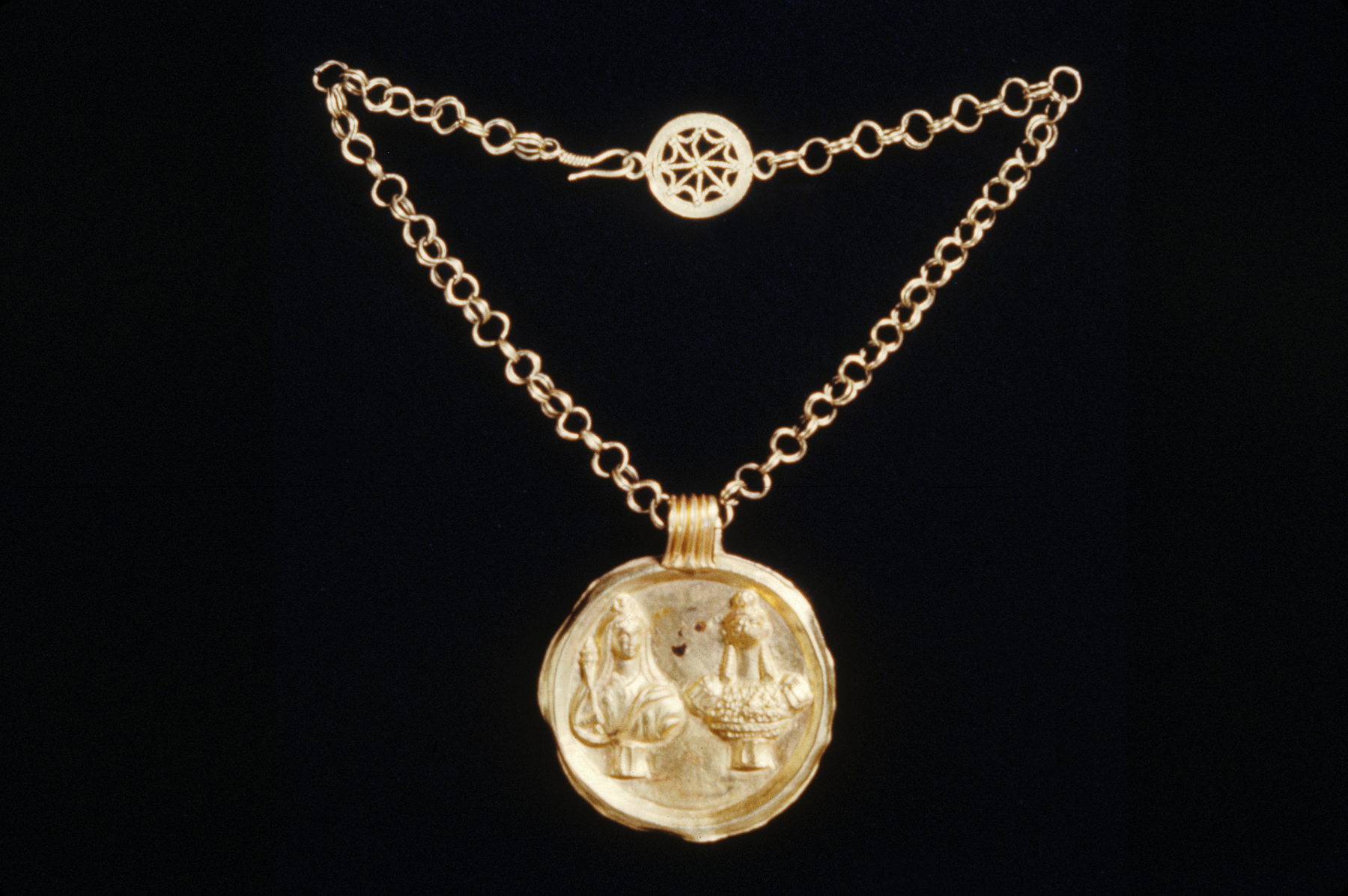Necklace and Pendant with Busts of Isis and Haroeris
2nd-1st century BC
Provenance
Provenance (from the French provenir, 'to come from/forth') is the chronology of the ownership, custody, or location of a historical object. Learn more about provenance at the Walters.
Provenance (from the French provenir, 'to come from/forth') is the chronology of the ownership, custody, or location of a historical object. Learn more about provenance at the Walters.
Henry Walters, Baltimore [date of acquisition unknown], by purchase; Walters Art Museum, 1931, by bequest.
Exhibitions
| 1984-1987 | Objects of Adornment: Five Thousand Years of Jewelry from the Walters Art Gallery, Baltimore. Cooper-Hewitt National Design Museum, New York; Chrysler Museum of Art, Norfolk; Carnegie Museum of Art, Pittsburgh; San Antonio Museum of Art, San Antonio; Philbrook Museum of Art, Tulsa; Honolulu Academy of Arts, Honolulu; New Orleans Museum of Art, New Orleans; Milwaukee Art Museum, Milwaukee; Minneapolis Institute of Art, Minneapolis; Toledo Museum of Art, Toledo; The John and Mable Ringling Museum of Art, Sarasota. |
| 1987 | Jewelry from the Walters Art Gallery and the Zucker Family Collection. The Walters Art Gallery, Baltimore. |
| 1979-1980 | Jewelry - Ancient to Modern. The Walters Art Gallery, Baltimore. |
Conservation
| Date | Description | Narrative |
|---|---|---|
| 9/20/1979 | Examination | examined for condition |
| 4/11/1984 | Treatment | cleaned; other |
Geographies
Roman Empire (Place of Origin)
Measurements
at clasp: 9 5/8 x 2 11/16 x 7/16 x 14 3/4 in. (24.5 x 6.79 x 1.12 x 37.5 cm) (h. x w. x d. x l.);
pendant: 2 11/16 x 2 1/4 x 7/16 in. (6.79 x 5.74 x 1.12 cm)
Credit Line
Acquired by Henry Walters
Location in Museum
Accession Number
In libraries, galleries, museums, and archives, an accession number is a unique identifier assigned to each object in the collection.
In libraries, galleries, museums, and archives, an accession number is a unique identifier assigned to each object in the collection.
57.539


